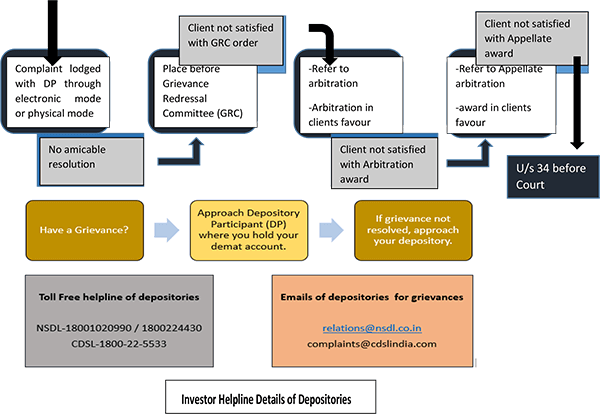Introduction
Investing may at times feel like a rollercoaster ride, consisting of heart-stopping drops and exciting climbs. However, if you want to accumulate wealth gradually, making rough day trades isn’t the solution.
Let me introduce you to the long-term stock portfolio, your reliable partner in this market race. Building a diverse portfolio that withstands challenges and expands in parallel with your objectives is the goal here, not sprinting to the finish line.
Creating a long-term stock portfolio remains essential for accumulating wealth and maintaining financial stability in the constantly changing world of finance. Making a solid portfolio involves careful preparation, strategic thinking, and a long-term perspective because of the stock market’s volatility and the unpredictable nature of world events.
Let’s explore the methods, approaches, and factors required in this thorough guide to construct a successful long-term stock portfolio in 2024.
Setting the Foundation
Setting up a strong foundation for your investing journey is a must before diving into the complex world of stocks. These fundamental steps can assist you in positioning yourself for success and confidently handle the market’s complexities.
1) Create Your Goals
Setting out on an investment adventure without specific goals is like sailing a ship without a destination. Think carefully about the goals you have in mind for your money. Do you want to accumulate wealth, support your child’s education, or save for retirement? You can adjust your investing plan to better suit your dreams by identifying your financial goals.
2) Educate Yourself
Information is power in the ever-changing world of money. Make the effort to educate yourself on the fundamentals of investing, such as risk management techniques, market patterns, and various investment vehicles. Learn about ideas including diversification, asset allocation, and fundamental analysis.
3) Understand Your Risk Tolerance
Creating a good investment strategy requires knowing your risk tolerance, which is something that comes with investing by default. Think about how comfortable you are with fluctuations in markets and possible losses. Do you want to take a less risky approach, or are you willing to enjoy the ups and downs of the stock market? Understanding your risk tolerance will allow you to make investment decisions that complement your personality and financial objectives.
4) Develop an Emergency Fund
It is necessary to have an adequate emergency fund before investing in the stock market. Because life is unexpectedly unpredictable, unanticipated costs can occur at any time. Make sure you have enough saved up to meet your living expenditures for the next three to six months. In times of financial distress, this emergency fund acts as a safety net, bringing stability and peace of mind.
Building a Long-Term Stock Portfolio: Effective Strategies
It’s time to get your hands dirty and start developing your long-term stock portfolio now that you have established a solid foundation for your investing endeavours. The following efficient strategies will assist you in navigating the market’s complexities and creating a stable investing portfolio.
- Diversification is the key to success
There is a solid reason why diversification is considered the golden rule of investment. Your total risk exposure can be reduced by distributing your investments among different asset classes, markets, and sectors. Recall the story of avoiding putting all your eggs in one basket.
Your overall investment portfolio will be significantly less impacted by a downturn in one industry or class of assets if it is diversified. Try to diversify your investments by holding a mix of stocks, bonds, and other financial instruments, and consider distributing your money throughout several industries including technology, healthcare, consumer products, and finance.
- Think about Dividend Stocks
Dividend-paying stocks offer a unique advantage for long-term investors. Not only do they have the potential to increase in value over time, but they also provide a steady stream of passive income in the form of dividends.
Reinvesting these dividends can accelerate the growth of your portfolio through the power of compounding. When selecting dividend stocks, look for companies with a history of consistent dividend payments, sustainable payout ratios, and strong cash flow generation. Dividend stocks can serve as a reliable source of income, especially during periods of market volatility.
- Review and Rebalance Often
Investing needs constant attention and direction; it’s not a project that can be completed in one sitting. Maintain a regular check on the performance of your portfolio and make the necessary modifications to keep it in line with your risk tolerance and investing objectives.
Rebalancing involves asset purchases and sales to preserve your intended asset allocation. For example, if certain assets have outperformed others and now represent a larger portion of your portfolio than intended, consider selling some of those assets and reallocating the proceeds to underperforming assets or those that are currently undervalued.
By reviewing and rebalancing your portfolio regularly, you can ensure that it remains on track to meet your long-term financial objectives.
- Give Priority to Quality
In the process of constructing a long-term stock portfolio, quality should always come first. Invest mostly in reputable businesses that have a track record of reliable performance, high earnings growth, and sound foundations.
These superior companies are better equipped to withstand shifts in the market and economic cycles. Seek out businesses with distinct advantages over their competitors, such as well-known brands, modern products and services, and solid business plans. Putting quality over quantity can help you create a portfolio that will endure and provide steady profits over time.
Conclusion
It takes time, focus, and a calculated approach to build a long-term stock portfolio. The stock market’s ups and downs can be confidently navigated by defining clear goals, diversifying your investments, and remaining educated.
Keep in mind that investing is a process rather than a race. You can build a portfolio that endures and supports your long-term financial goals in 2024 and beyond with careful planning and commitment.




